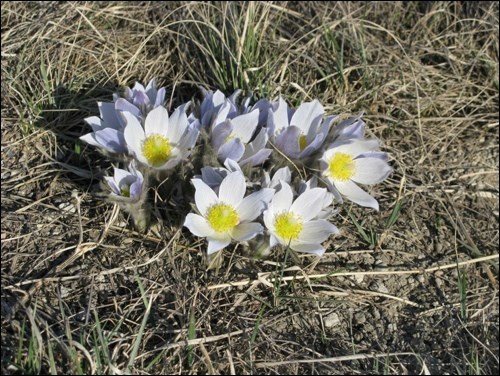Easter, while a Christian celebration, derives its name from the pagan goddess representing spring, Eastre. And in keeping with the spring theme, many of the plants associated with Easter are early spring bloomers.
The white Easter lily is by far the most familiar Easter plant in North America. Greenhouse growers have perfected forcing Easter lilies to bloom precisely at Easter by adjusting day-length and temperature.
Elsewhere, other spring plants are used to decorate homes and places of worship. In my ancestral Norway and in other parts of northern Europe, the daffodil or Påskelilje is the traditional Easter plant. And in southern France and Italy, the closely related narcissus is used to symbolize Easter. Daffodils and narcissus can be combined with other spring flowers in a bouquet but must first be kept in a separate vase for at least a couple of hours to allow the sap to bleed off that would otherwise shorten the vase life of other cut flowers.
In England, Finland and Russia, the pussy willow is used to mark the holiday. The nice thing about pussy willows is that they can be used in dry arrangements and will look great for a few years. Given our recent weather, they might not be ready in Saskatchewan in time for this Easter, but if you make a bouquet in April, you’ll have them for next year.
In Germany, it is the red tulip because it symbolized Jesus’ blood that He shed on behalf of humanity. Tulips are easy-care cut flowers. Purchase them before the buds have opened for maximum vase life; make sure the buds are showing some colour. If they are completely green, they might have been picked too early and may not open.
American Pasque [an alternate name for Easter] flower (a.k.a. prairie crocus) is an early flowering native plant. As near as I can tell, its association with Easter is purely by reason of its flowering time. It is not suitable as a cut flower but can be found in grasslands and pastures as soon as most of the snow has melted. One site in Saskatoon where you’re sure to find light purple prairie crocus blooming in small clumps is in the aptly name Crocus Prairie Park, along the river bank next to the regional psychiatric centre, north on Central Avenue. You can grow prairie crocus in your garden provided it is in a dry sunny location – a rock garden is an ideal site. They don’t transplant well from the wild but can be established from seed and are available as seedlings from some garden centres. The closely related European Pasque flower is darker purple but it is less hardy than our native version.
Calla lilies have come to be associated with Easter in more recent times. My friend says they remind him of death and to some extent that’s true. I remember watching the Munsters as a child and Lily, the family matriarch, would sleep as if dead holding a white calla lily. But it is probably their use to commemorate the fallen of the Irish Easter Rising (aka Easter Rebellion) in 1926 that their association with the Easter season became entrenched.
Finally, there’s the florist hydrangea in shades of pink, coral and blue. Traditionally a Mother’s Day gift, their link with Easter is likely due to greenhouse growers’ ability to force them into bloom in time. They are relatively easy to care for, asking only to be kept evenly moist. Even a short period of drought will significantly reduce their otherwise very long flowering period.



